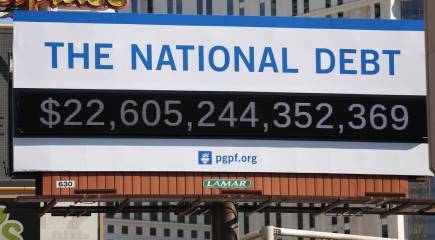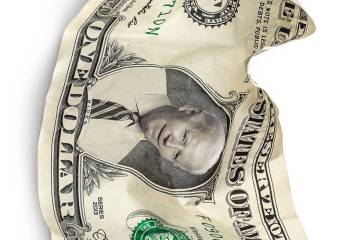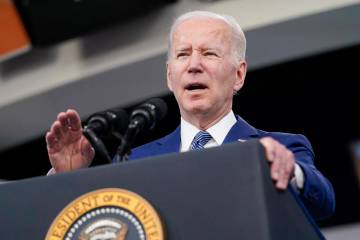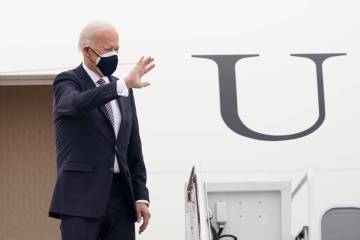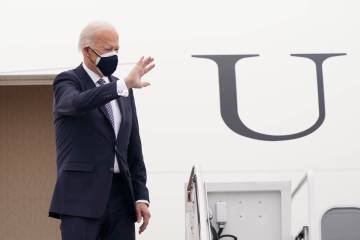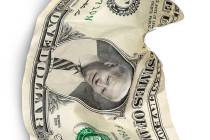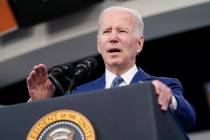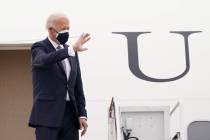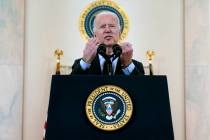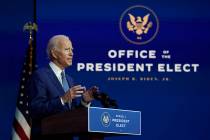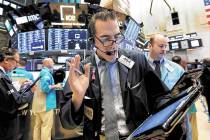COMMENTARY: Washington’s bipartisan debt bonanza
This past week, President Donald Trump and Congress found once again that, despite all their differences, they could agree on one key issue: an authorization of an increase in spending, in this instance by some $1.37 trillion.
There was, as ever, much political disagreement on spending priorities. Democrats tend to favor a larger social safety net, while the president and some Republicans favor defense and other essential facilities. But let no one ever deny that a passion for pork runs deep on both sides of the aisle, with goodies galore for all involving gun violence, election security, defense expenditures, federal pay raises, the 2020 census, Head Start, food stamps, energy subsidies, and lots more.
Some of the new expenditures can be paid for out of increased tax revenues generated by a thriving economy that has managed to survive a protracted trade war with China and snail-like progress toward adopting the new United States-Mexico-Canada agreement. But make no mistake about it, a huge chunk of the new social expenditures will be paid for by tomorrow’s citizenry — by issuing debt today.
To be sure, some debt is always a proper part of the capital structure of any organization, including the U.S. government. There are many current expenditures that will yield benefits for years to come. People borrow money to pay for their homes so that they can match their expected debt payments in each period with their expected income in that same period.
The same proposition holds for public expenditures. It makes little sense to fund future capital expenditures for roads and other public infrastructure out of current cash receipts. The debt incurred for these expenditures is backed by a long-term asset capable of carrying the load. Ideally, at least some portion of the cost of the road should come from revenues tied to these improvements, whether tolls or gasoline taxes, as that form of fiscal discipline is the best way to ensure that a particular project is not just more pork. But even if general revenues are spent, the social balance sheet contains at least some asset to set off the liability.
Alas, cash-accounting systems for government expenditures do not account for these capital assets. Fifty years ago, a much larger fraction of government expenditures was made on roads and other infrastructure improvements. Today more of the budget is dedicated to transfer payments, chiefly through Medicaid, Medicare and Social Security.
The consequences of this change in the use for the national debt are dramatic. A graph of the basic picture would show only modest increases in the national debt ceiling between 1940 and 1980. But then the arrow turns smartly upward, from roughly from $1 trillion in the early 1980s to nearly $21 trillion today — of which at least two-thirds has occurred in the past 15 years.
The growth of national debt seems to be largely independent of which party is in power, even as the two parties have some difference in priorities. Both Barack Obama and Donald Trump are, in their different ways, big, populist spenders, and there is not a strong of public accounting that prevents either from shoveling out large sums of money to their favored constituents, often as legislative favors in an election year.
In previous years, the United States was able to park a substantial share of our debt on foreign entities, which marked their confidence that these obligations would be repaid in due course, without any inflation that could cheapen the dollar. Today, more of the debt is internal to the United States. Some people might think that this development just means that we owe the money only to ourselves — which is no big deal. That would be true if such debt were held in equal proportions by all citizens. But that’s just a fantasy, for it turns out, on net, that some individuals and firms have a far larger share than the rest of the public at large.
Put otherwise, payment or nonpayment of the debt does result in major wealth transfers among our citizens. And it could result in some form of inflation if the government prints more money in order to pay creditors with cheaper dollars.
And it is here that we have the great puzzle. Great inflation has not taken place as interest rates have remained low, so the worst-case scenario has not occurred. All that does not make the current system ideal. Artificially low interest rates are a deterrent to individual savings. Huge government deficits could eventually drive out private investment, thereby reducing long-term growth. The truth is, however, a tacit bipartisan consensus scoffs at those “deficit hawks” who think deficits really matter. There have been too many times that these hawks cried wolf and nothing happened.
So the puzzle is, why worry? I think the explanation comes from a related source. It is the belief that we can propose massive increases in public expenditures without worrying about the budgetary consequences, given that some combination of taxes and borrowing stand ready to cover the public cost without worrying about inflation. Thus far, that position has held tolerably firm. But that is because the Republican appetites for spending increases, as ample as they are, are tiny in comparison with the far more ambitious Democratic expenditures.
Thus, Sen. Elizabeth Warren can propose with a straight face a wealth tax of 6 percent on persons whose assets exceed $50 million, a hefty increase in individual and corporate taxation rates, a shutting down of private equity firms by onerous regulation, and a dilution of private shareholders by forcing all boards to appoint various union and public representatives. Those proposals are all growth killers which, if adopted, will lead to a massive contraction of the economy.
Sadly, it is just that much harder to fight the expanded public sector if we remain indifferent to the small distortions of excessive borrowing. The next iteration of public reform, should it ever come to pass, will prove far more dangerous.
Richard A. Epstein is a professor at the New York University School of Law, a senior fellow at the Hoover Institution and a distinguished service professor of law emeritus and senior lecturer at the University of Chicago. His Review-Journal column appears monthly.



